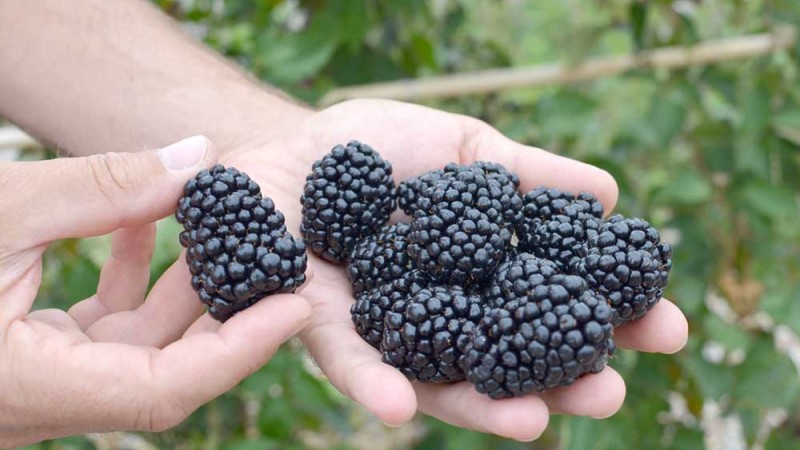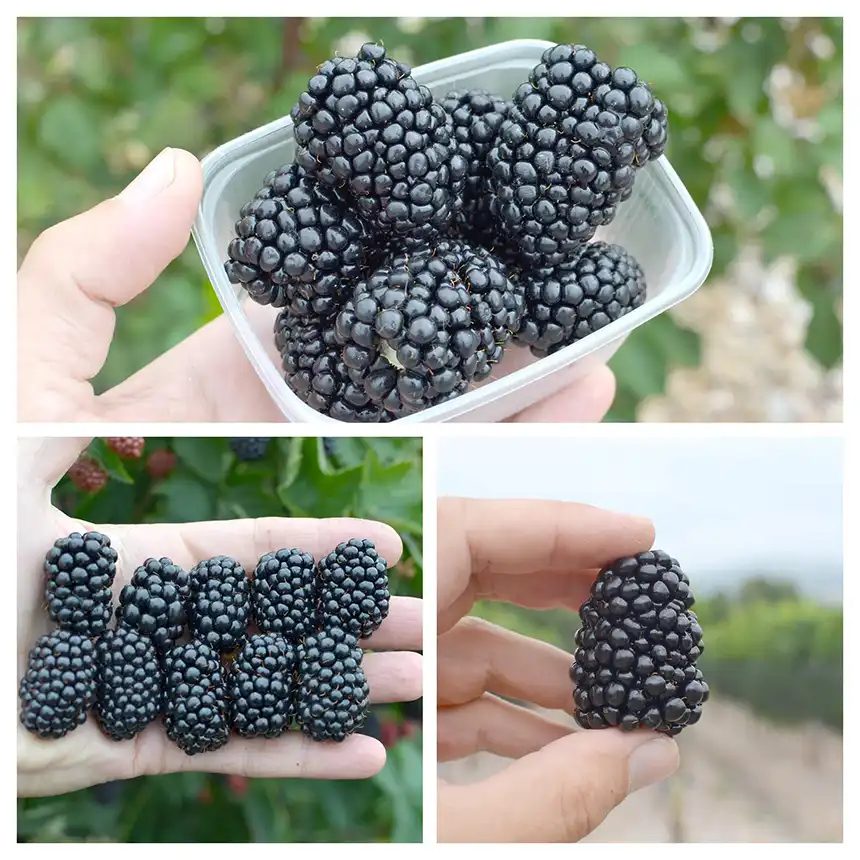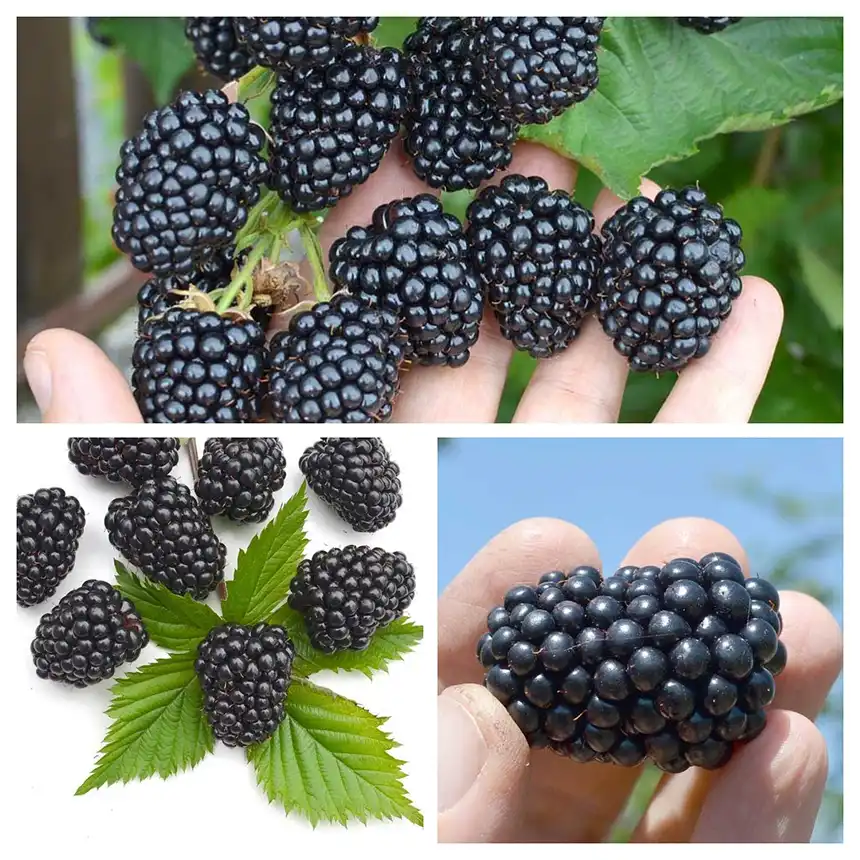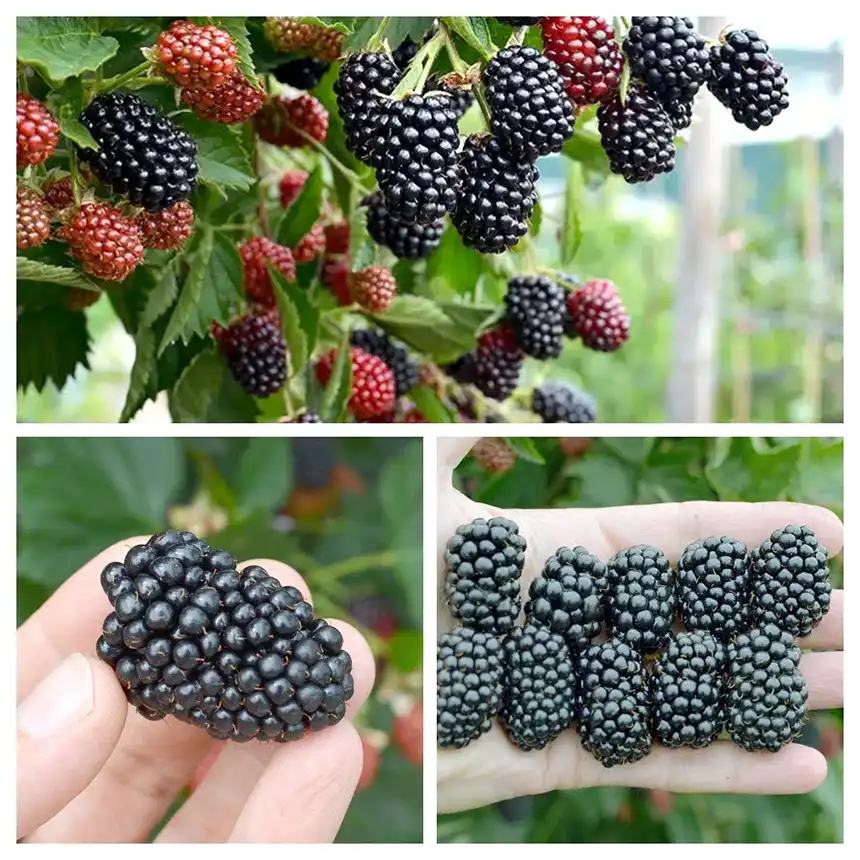
Most modern blackberry varieties were developed in the United States. Breeding programs have focused on developing thornless varieties, disease resistance, and improving the quality and taste of the fruit. There are now many blackberry varieties available for planting in gardens, which provide high yields of large fruits with excellent taste. The berries ripen gradually over six weeks and, depending on the ripening period, can be harvested from June to October. Blackberries are divided into erect or trailing, thorny or thornless by growth.
Location and soil
Blackberries do not have special requirements for soil and location, but they are more demanding on heat than raspberries. They require a sunny location protected from frost and wind. In harsher locations, thornless varieties in particular freeze out. They thrive in loamy soil, rich in humus and nutrients. Unlike raspberries, they can easily tolerate dry summers.

Planting and care
The most suitable time to prepare the soil for planting blackberries is autumn, when granulated manure and phosphorus-potassium fertilizer are spread. Nitrogen fertilizer is added during the vegetation as needed. Most often, when planting blackberries, we encounter container plants, which can be planted from spring to autumn. Thornless varieties are planted in the spring months due to their susceptibility to freezing. When planting in autumn, we pile soil around the plants, which serves as protection against freezing. We plant the blackberries in a hole measuring 0.3 x 0.3 x 0.3 m. The distance between plants in a row is 1.5 - 2 m. After planting, we cut the canes to 2 - 3 buds, about 30 cm from the ground. This will promote rooting and achieve high-quality, fruiting canes in the first year (primocanes). We layer mulch bark around the plant to prevent weed growth.

Pruning and training
Blackberries bear fruit on short young lateral shoots that grow on long canes from the previous year. Supplementary irrigation in the event of a dry period at the beginning of summer improves the size and quality of the fruit. Immediately after the fruit harvest period, we remove the old canes that already bore fruit (floricanes) to the ground. Thus creating space for the growth and good ripening of first-year canes (primocanes). These grow from the root collar and form the basis of next year's crop. The next cut is made in early spring, when frozen or damaged canes should be cut down to a healthy, unfrozen part. It is advisable to shorten the canes to a length of 1.5 - 2 m, usually leaving 5 - 6 canes. The lateral shoots are shortened to 2 - 3 buds. The primocanes should be trained along a suitable support. The easiest way is to plant the blackberry to a wire fence to which the canes are continuously tied during the vegetation.

Harvesting
The fruits ripen from June to October (depending on the variety). The harvest period is long, it can last up to 6 weeks. With proper care, blackberries will provide us with a rich yield. Once blackberries start to ripen, they must be picked often, every couple of days. We pick only ripe fruits, because the berries do not ripen after being picked. Mature berries are plump yet firm, a deep black color, and pull freely from the plant without a yank. Harvest during the cooler parts of the day. Once picked, place berries in the shade and refrigerate as soon as possible. Blackberries only last a few days after harvest, even in the refrigerator. Although fresh fruit is always best, blackberries can be juiced, preserved, canned, or frozen. The leaves can be dried and used for tea.
Blackberry diseases
In cold and humid weather during the ripening phase, losses can be caused by gray mold (Botrytis cinerea), which causes fruit rot. Blackberry cane and leaf rust (Kuehneola uredinis) presents as yellow to orange pustules on the canes and leaves, which burst and release spores. Viral diseases are manifested by color changes and mosaic-like spots on the leaves. Infested canes or leaves should be removed and and burned. Proper spacing of plants, good air circulation, and timely pruning can help reduce the incidence of many diseases. If necessary, suitable fungicides, such as copper-based ones, can be used to protect against rust. Focus on growing disease-resistant varieties, observing proper care for blackberries and removing weeds.
Blackberries heal and strengthen blood vessels
The healing effect of blackberries is significantly enhanced by the high content of bioflavonoids - substances that protect against oxidation. These substances are extremely important, especially for those who suffer from vascular problems such as varicose veins, weak vascular walls, high blood pressure and hemorrhoids, which has also been confirmed by professional research. Bioflavonoids strengthen and regenerate vascular walls, improve blood flow, strengthen ligaments and generally slow down the aging of the body. Blackberries are therefore excellent as prevention but also as a support for treatment. If we have the opportunity, it is a good idea to secure a supply of blackberries in any form for the whole year and use them regularly, their beneficial effect is definitely worth it.










